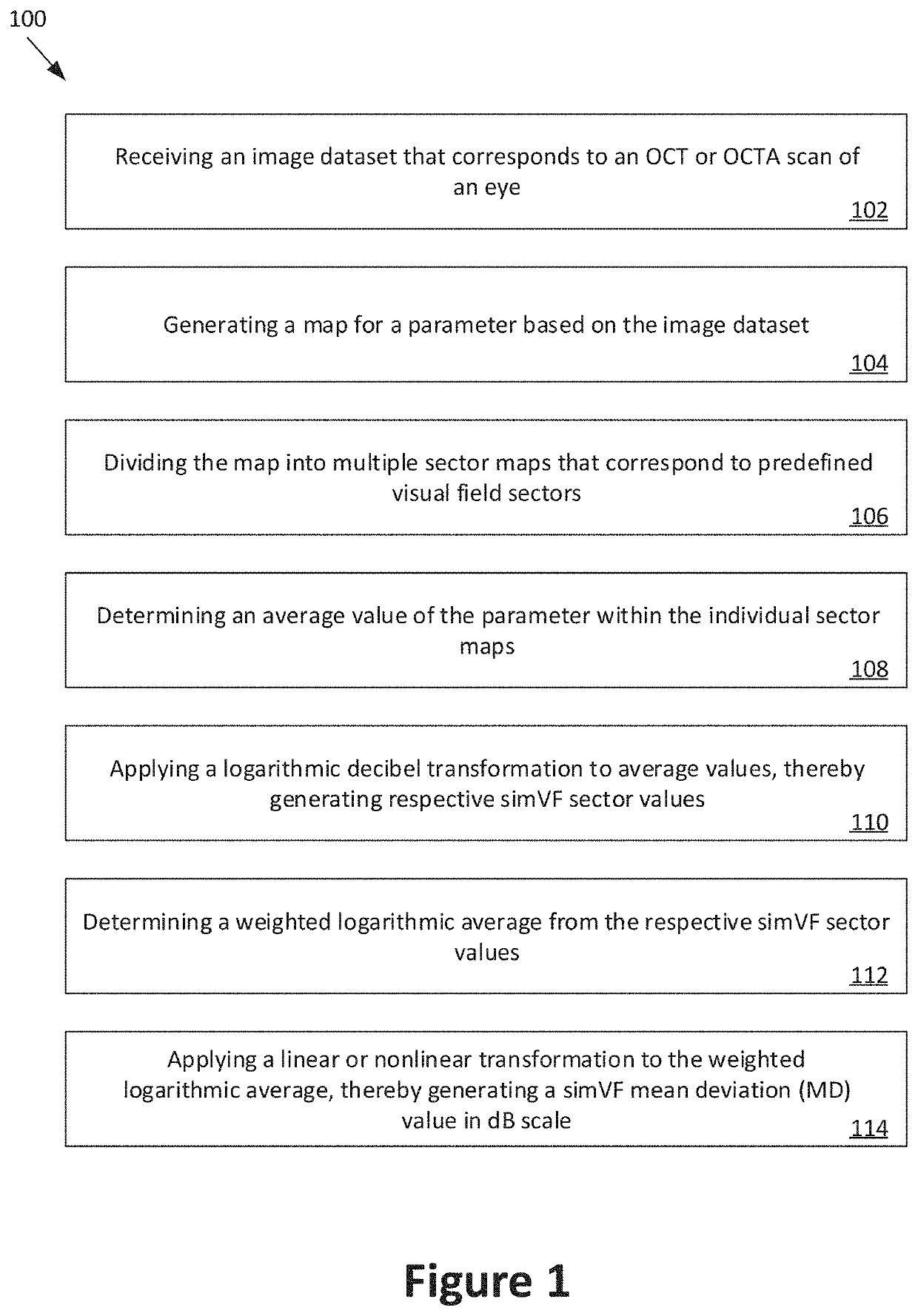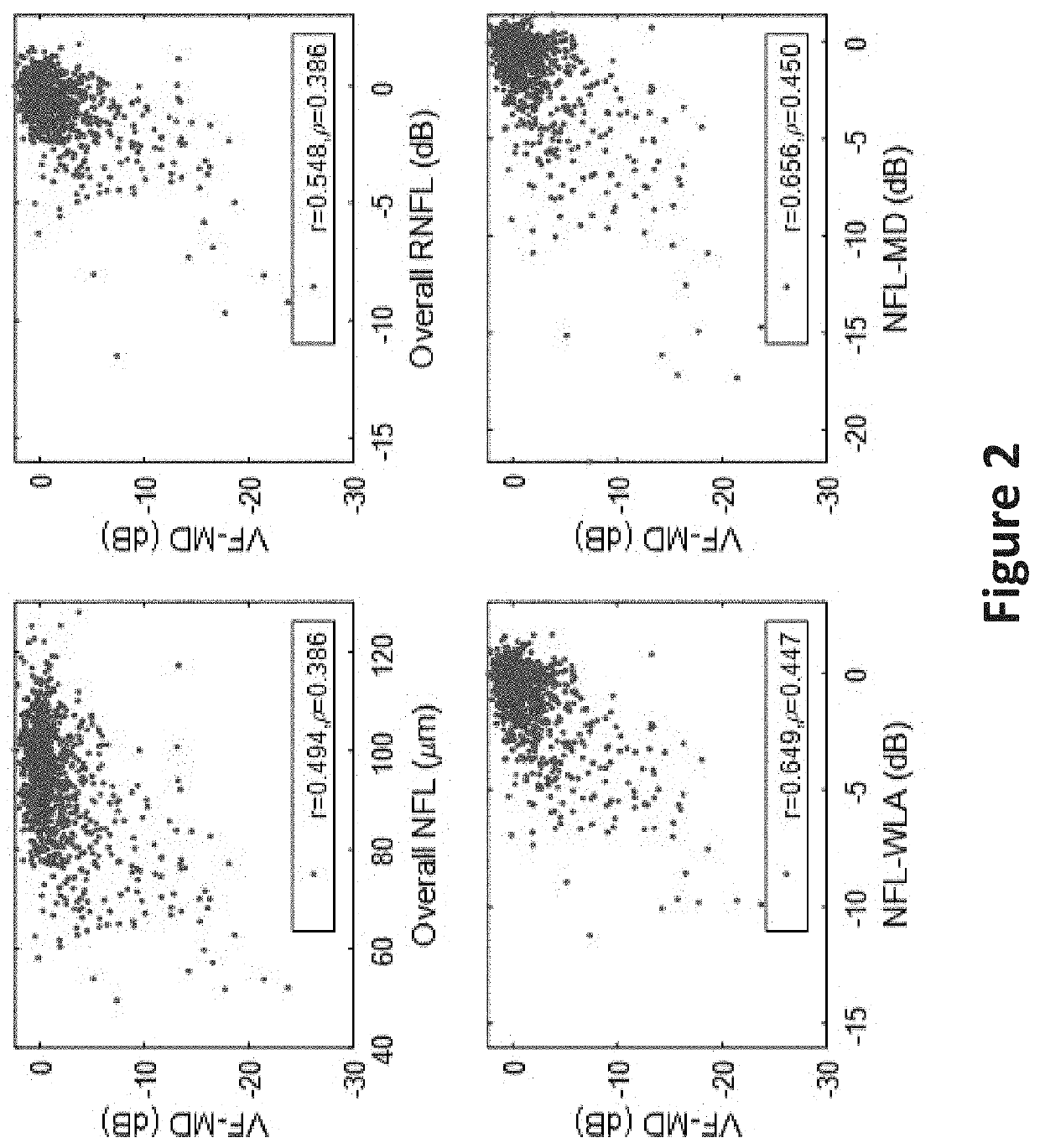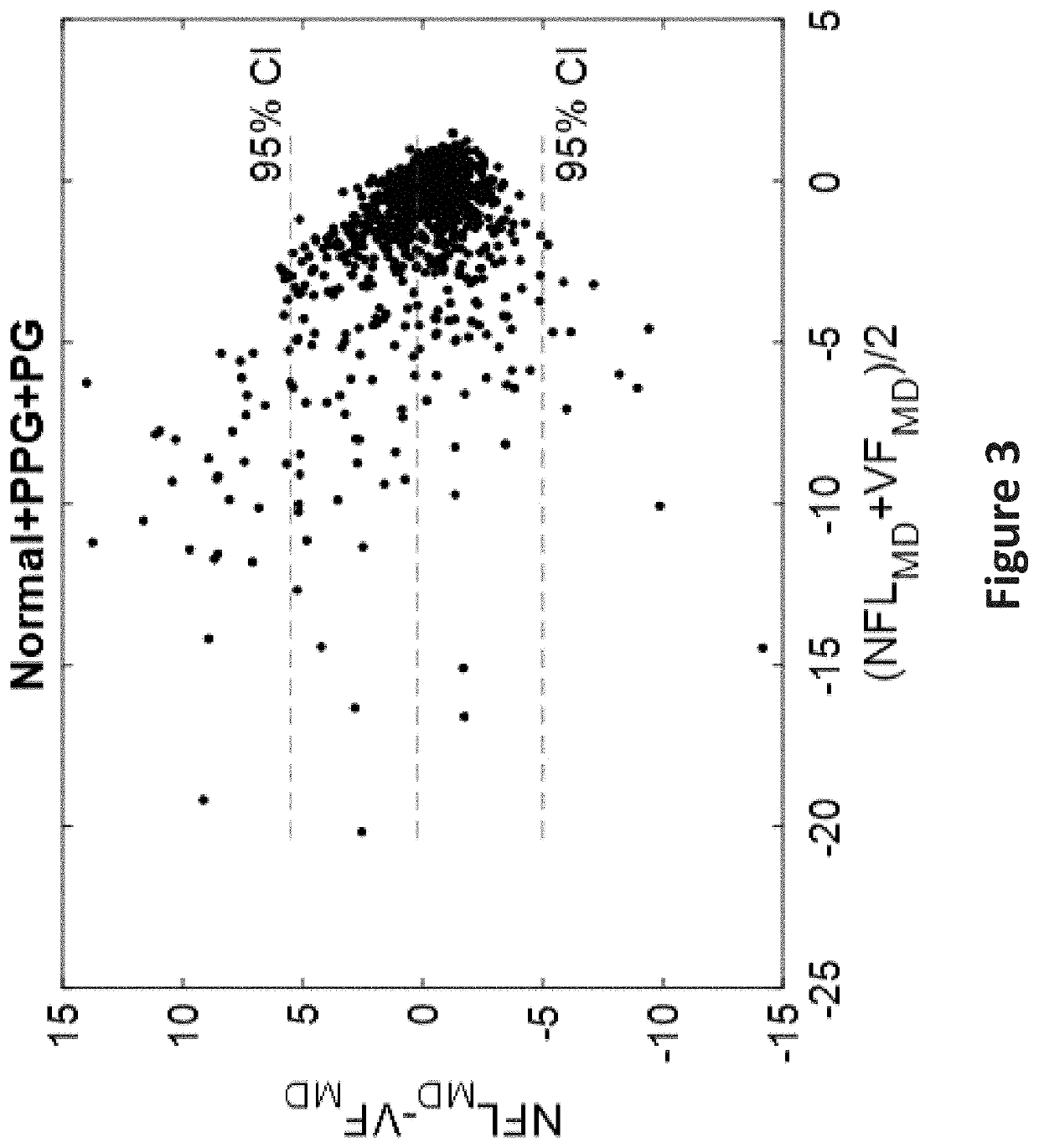Visual field simulation using optical coherence tomography and optical coherence tomographic angiography
- Summary
- Abstract
- Description
- Claims
- Application Information
AI Technical Summary
Benefits of technology
Problems solved by technology
Method used
Image
Examples
example 1
g Visual Field Mean Deviation Using Optical Coherence Tomographic Nerve Fiber Layer Measurement in Glaucoma Patients
[0087]Purpose:
[0088]To construct an optical coherence tomography (OCT) nerve fiber layer (NFL) parameter that has maximal correlation and agreement with visual field (VF) mean deviation (MD).
[0089]Methods:
[0090]The NFL_MD parameter in dB scale was calculated from the peripapillary NFL thickness profile nonlinear transformation and VF area-weighted averaging.
[0091]Results:
[0092]From the Advanced Imaging for Glaucoma study, 245 normal, 420 pre-perimetric glaucoma (PPG), and 289 perimetric glaucoma (PG) eyes were selected.
[0093]NFL_MD had significantly higher correlation (Pearson R: 0.66 vs 0.49) with VF_MD than the overall NFL thickness. NFL_MD also had significantly higher sensitivity in detecting PPG (0.13 vs 0.08) and PG (0.59 vs 0.43) at the 99% specificity level. NFL_MD had better reproducibility than VF_MD (0.35 vs 0.69 dB, p<0.001). The differences between NFL_MD ...
example 2
g Visual Field Mean Deviation Using OCT—Angiography
1. Introduction
[0159]Glaucoma is the leading cause of irreversible blindness worldwide. Early diagnosis and monitoring with appropriate treatment are necessary to prevent visual loss which is irreversible and usually becomes symptomatic only in its late stages. Current methods of assessing glaucoma and its progression have significant limitations. The visual field (VF) directly assesses function, but the testing is subjective, time consuming, and poorly repeatable. Quantitative imaging of the peripapillary retinal nerve fiber layer (NFL) with optical coherence tomography (OCT) provides a faster, more repeatable and objective assessment in the diagnosis and monitoring glaucoma. However, NFL thickness has only moderate correlation with VF parameters, and the correlation further deteriorates in the later stages of glaucoma due to the “floor effect.” Therefore, structural OCT NFL measurements perform relatively poorly in the monitoring ...
PUM
 Login to View More
Login to View More Abstract
Description
Claims
Application Information
 Login to View More
Login to View More - R&D
- Intellectual Property
- Life Sciences
- Materials
- Tech Scout
- Unparalleled Data Quality
- Higher Quality Content
- 60% Fewer Hallucinations
Browse by: Latest US Patents, China's latest patents, Technical Efficacy Thesaurus, Application Domain, Technology Topic, Popular Technical Reports.
© 2025 PatSnap. All rights reserved.Legal|Privacy policy|Modern Slavery Act Transparency Statement|Sitemap|About US| Contact US: help@patsnap.com



